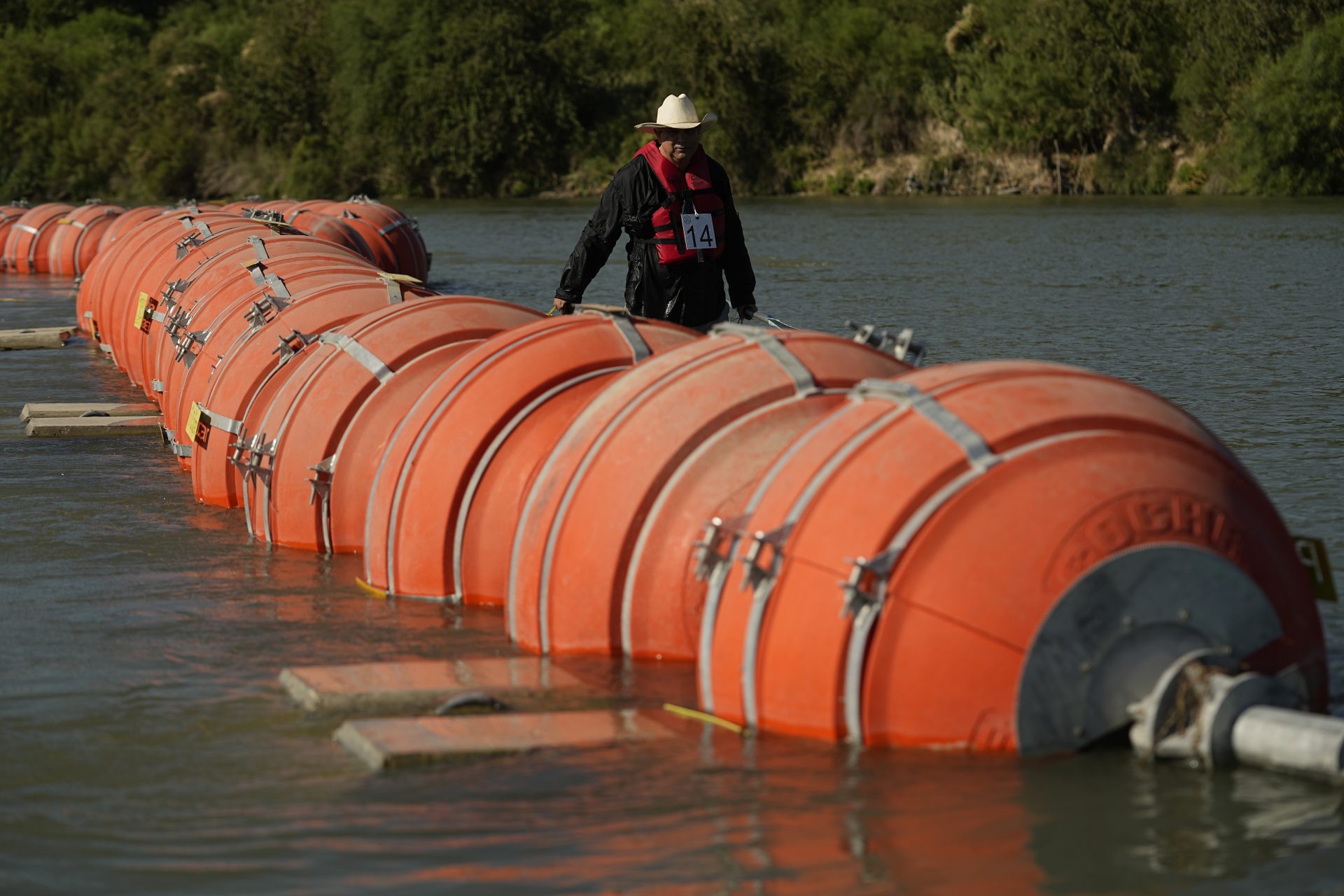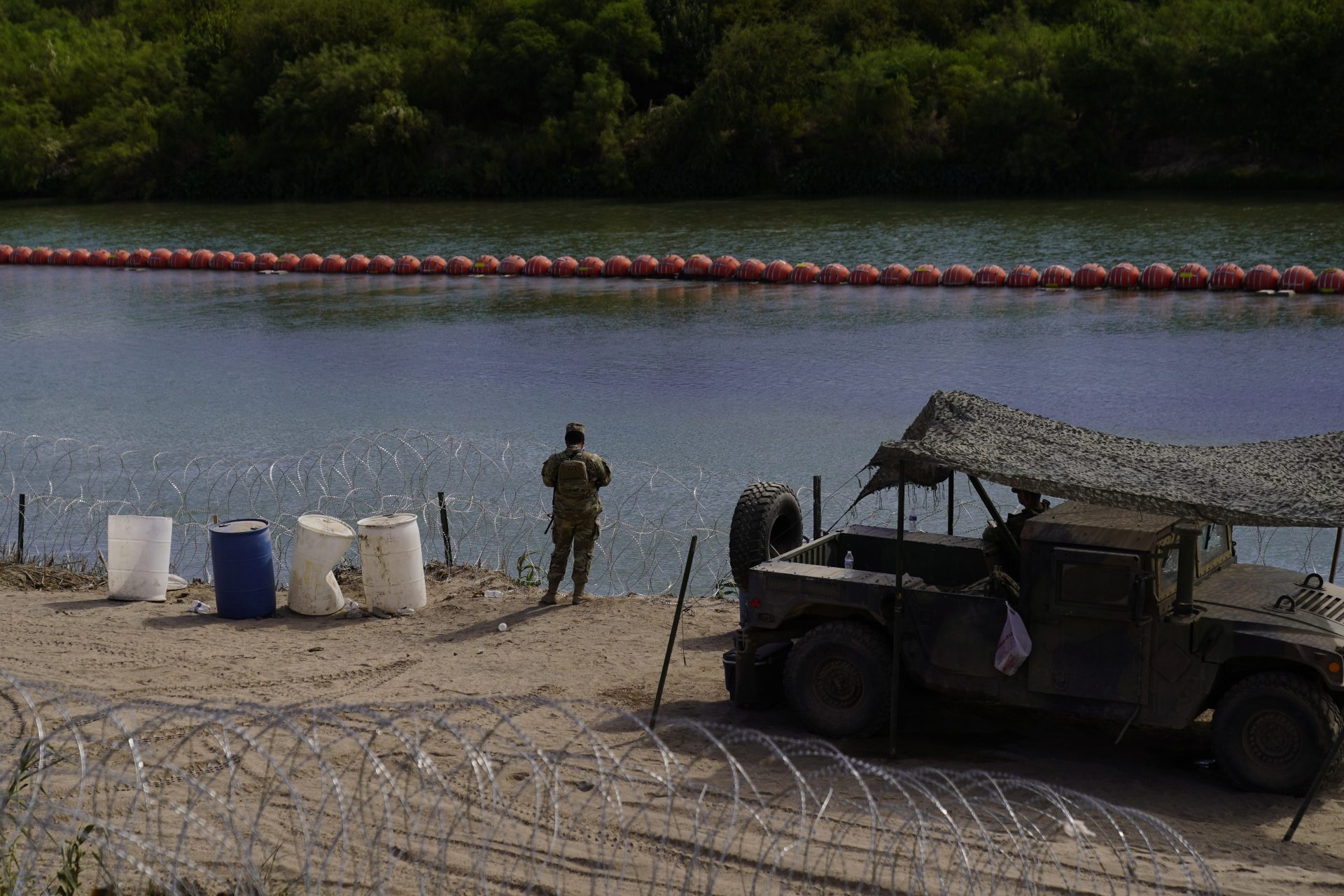|
Only have a minute? Listen instead
Getting your Trinity Audio player ready...
|
By PAUL J. WEBER | Associated Press

AUSTIN (AP) — A federal judge on Wednesday ordered Texas to move a large floating barrier to the bank of the Rio Grande after protests from the the U.S. and Mexican governments over Republican Gov. Greg Abbott’s latest tactic to stop migrants from crossing America’s southern border.
The decision by U.S. District Judge David Ezra is a victory for President Joe Biden’s administration, which sued after Texas put the wrecking ball-sized buoys on the water in early July as part of a sprawling border security mission known as Operation Lone Star. The judge said the state must move the barrier by Sept. 15.
The barrier threatens provisions of a treaty between U.S. and Mexico, wrote Ezra, who also cast doubt on its effectiveness.
“The State of Texas did not present any credible evidence that the buoy barrier as installed has significantly curtailed illegal immigration across the Rio Grande River,” Ezra wrote.
Abbott said Texas would appeal.
“Today’s court decision merely prolongs President Biden’s willful refusal to acknowledge that Texas is rightfully stepping up to do the job that he should have been doing all along,” Abbott said.
Texas used dozens of bright orange buoys to created a barrier longer than a soccer field on a stretch of river where migrants often try crossing from Mexico. Texas also has installed razor wire and steel fencing on the border, and has empowered armed officers to arrest migrants on trespassing charges.
The buoys brought a swift legal challenge from the U.S. Justice Department, which accused Texas putting a barrier on the international boundary without permission. The Biden administration also said the water barrier raised humanitarian and environmental concerns.

Texas installed the barrier near the border town of Eagle Pass and put anchors in the riverbed. Eagle Pass is part of a Border Patrol sector that has seen the second-highest number of migrant crossings this fiscal year with about 270,000 encounters — though that is lower than it was at this time last year.
The Biden administration has said illegal border crossings declined after new immigration rules took effect in May as pandemic-related asylum restrictions expired.
Like other pieces of Abbott’s multibillion-dollar border mission known as Operation Lone Star, the buoys pick up where former President Donald Trump left off. Plans for the same water barrier were in the pipeline in 2020, according to Mark Morgan, who at the time was the acting commissioner of U.S. Customs and Border Protection.
Morgan said the plans were scrapped after Biden took office. He called the barrier a “water wall” and said it was intended to be used as a stopgap in sections of the border where fences were not yet built or were impractical.



